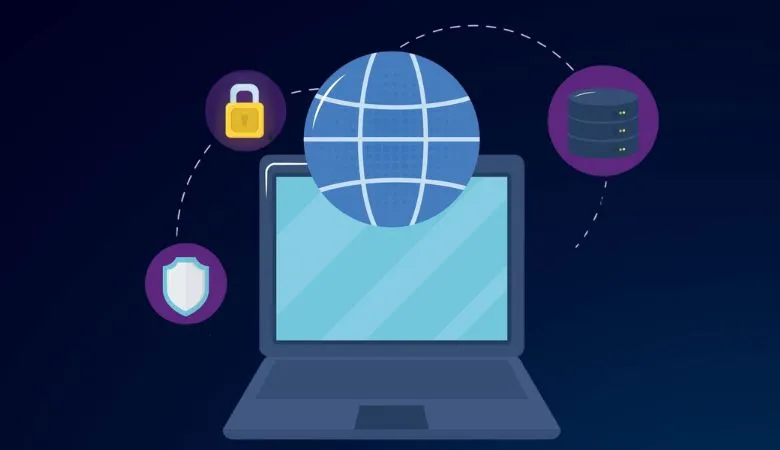The Role of Firewalls in Modern Cybersecurity

Firewalls are important for network security, traffic monitoring, malware protection, access control, and compliance. Advanced firewalls extend these capabilities, including content inspection, remote access protection, and application-level filtering. Integrating firewalls with other security tools further bolsters an organization’s defenses against evolving cyber threats.
Key Takeaways
- Firewalls are essential for safeguarding networks against unauthorized access.
- Understanding different types of firewalls helps you choose the right security solution.
- Incorporating additional security measures alongside firewalls enhances cybersecurity.
Understanding Firewalls
In the ever-evolving realm of cybersecurity, the firewall stands as a sentinel, vigilantly guarding the borders of private networks. A firewall monitors and controls the traffic that traverses these digital boundaries as a cornerstone in any defensive strategy. It employs predetermined rules to filter incoming and outgoing data packets. Acting as a barrier, it sifts through unwanted or malicious traffic that could compromise sensitive data, forming the first line of defense against cyber threats.
A firewall is not merely a singular entity but a comprehensive suite of technologies and protocols working cohesively to ensure data integrity and user privacy. From filtering to monitoring, its functionality encompasses various facets aimed at preventing unauthorized access. Organizations deploying firewalls can significantly enhance their network defenses, allowing only authorized traffic while detecting and mitigating threats as they arise. By doing so, they can preserve the integrity of their network perimeters against increasingly sophisticated threats.
Types of Firewalls

Firewalls are available in many forms, each designed to address specific security needs. The most basic type is the packet-filtering firewall. This approach examines data packets’ source or target IP addresses, ports, and protocols. Although fundamental, this type offers robust initial protection against known threats.
Another notable type is the proxy firewall, also referred to as an application-level gateway. These firewalls act as intermediaries facilitating or blocking requests between clients seeking resources and the corresponding servers. By operating at the application layer, proxy firewalls provide deeper inspection capabilities, which can prevent malware from penetrating the network.
Stateful inspection firewalls offer a dynamic solution, monitoring active connections to ensure incoming packets match the established connection parameters. These firewalls more effectively authenticate the legitimacy of data packets. Further advancements have led to the development of next-generation firewalls (NGFWs). These sophisticated systems integrate traditional firewall functionalities with advanced features like encrypted traffic inspection, intrusion prevention systems, and deep packet inspection. NGFWs represent the latest evolution in threat management, providing comprehensive security solutions for modern networks.
Importance in Cybersecurity
Firewalls are an indispensable component of any cybersecurity strategy, essential for safeguarding critical information from unauthorized access and attacks. As cyber criminals craft increasingly ingenious methods to breach networks, robust firewall defenses are crucial in the fight against cyber threats. A 2022 study in cybersecurity highlighted the substantial impact firewalls have on reducing data breach incidents, affirming that organizations fortified with strong firewall protection exhibited considerably lower rates of security compromises compared to their less prepared counterparts.
Firewalls also serve as vital tools in controlling and monitoring external communications. They provide granular control over incoming and outgoing traffic, ensuring that only safe, pre-authorized access is permitted. By effectively acting as custodians of network security, firewalls protect against various attacks, including those posed by malicious software and unauthorized access attempts.
Choosing the Right Firewall
Selecting the most fitting firewall for an organization involves comprehensively evaluating several key factors. These include network size and complexity, specific threats, desired functionalities, and financial constraints. Tailoring firewall solutions to an organization’s unique needs ensures adequate protection from potential cyber threats.
Organizations should meticulously analyze available market solutions, focusing on attributes like ease of integration, scalability for future growth needs, and ongoing vendor support. Successfully aligning these factors with the chosen firewall technology results in a harmonious network security setup that proves effective and enhances network efficiency and operational integrity.
Real-Life Examples of Firewall Breaches
There have been numerous high-profile incidents where lapses in firewall deployment underscored the importance of maintaining robust perimeter defenses. A noteworthy case involved a significant data leak experienced by a multinational corporation, where outdated firewall configurations facilitated unauthorized access. This breach exemplifies the critical need for routine updates and meticulous maintenance of firewall settings.
Such breaches highlight vulnerabilities that can be remedied through proactive measures. Sometimes, minor configuration errors or delayed updates can open avenues for exploitation, underscoring the necessity for vigilance and regular audits to ensure maximum protection against cyber threats.
Integrating with Other Security Measures
While firewalls are a cornerstone of network security, relying solely on them can leave a network vulnerable to unforeseen threats. Incorporating additional security layers allows organizations to implement a more comprehensive defense strategy.
This multi-tiered approach, often called “defense in depth,” dramatically enhances an organization’s security posture by minimizing single-point failures. By integrating various security measures, organizations can employ a more robust, comprehensive protection scheme, enabling better responses to emerging threats.
Future of Firewalls
Significant technological advancements, particularly in AI and ML, are driving the evolution of firewalls. These developments pave the way for more agile threat detection and response systems capable of adapting to new and complex attack vectors. AI-enhanced firewalls are poised to recognize anomalies faster and conduct sophisticated pattern analysis to predict threats before they materialize.
Moreover, integrating automated processes will allow firewalls to evolve beyond passive defense structures into proactive elements of a security team capable of real-time responses to threats. As networks grow more intricate, the adaptability and intelligence provided by future firewall technologies will be critical to maintaining secure digital environments.
Conclusion
Firewalls represent an integral component within the matrix of cybersecurity defenses, offering crucial protections against unauthorized access and cyber threats. Organizations can considerably bolster their protection strategies by comprehending their diverse types, functionalities, and integrations with supplemental security measures. Additionally, recognizing the importance of regular updates and being proactive in adopting emerging technologies will ensure that firewalls continue to play an essential role in safeguarding digital assets within an ever-evolving cybersecurity landscape.






